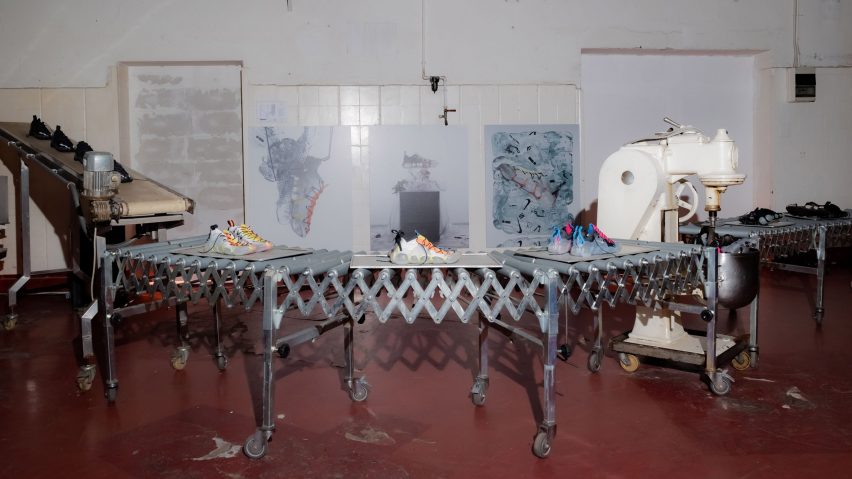
"We're recontextualising what a shoe is" says Nike VP Darryl Matthews
New manufacturing processes are pushing the boundaries of trainer design, says vice president of footwear design at Nike's Catalyst team in this interview.
Darryl Matthews, who heads up footwear design for Nike's Catalyst team and has worked on designs such as the brand's glueless ISPA trainers, spoke to Dezeen at the ISPAnificio exhibition during Milan design week.
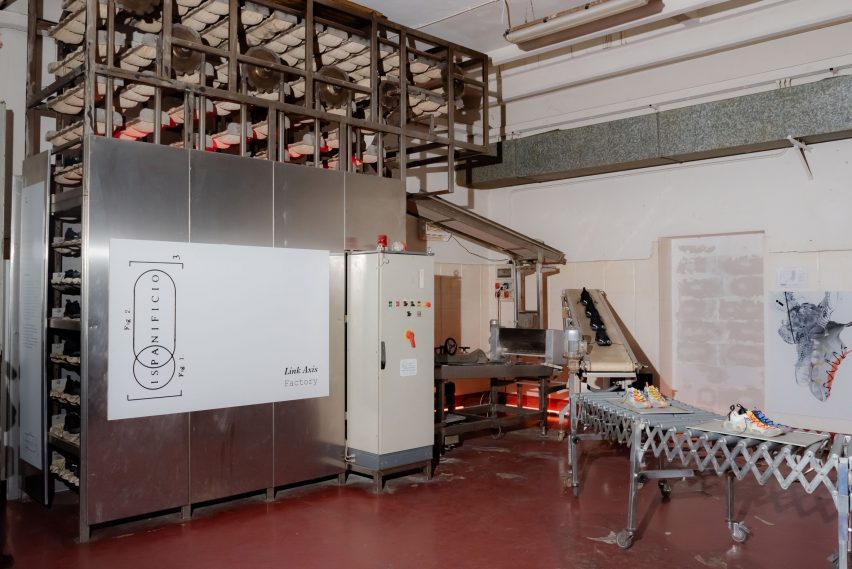
The exhibition, which was held in a former bread factory in northern Milan, aimed to explore "circularity and connectivity" and look at how trainers can be manufactured more sustainably – a subject that Matthews said is the focus for Nike's ISPA (Improvise Scavenge Protect Adapt.)
"There's a lot of stuff that people don't know that happens in the background on sustainability," Matthews told Dezeen. "This is now kind of our bread and butter, where we are leading towards with ISPA and what we really believe in."
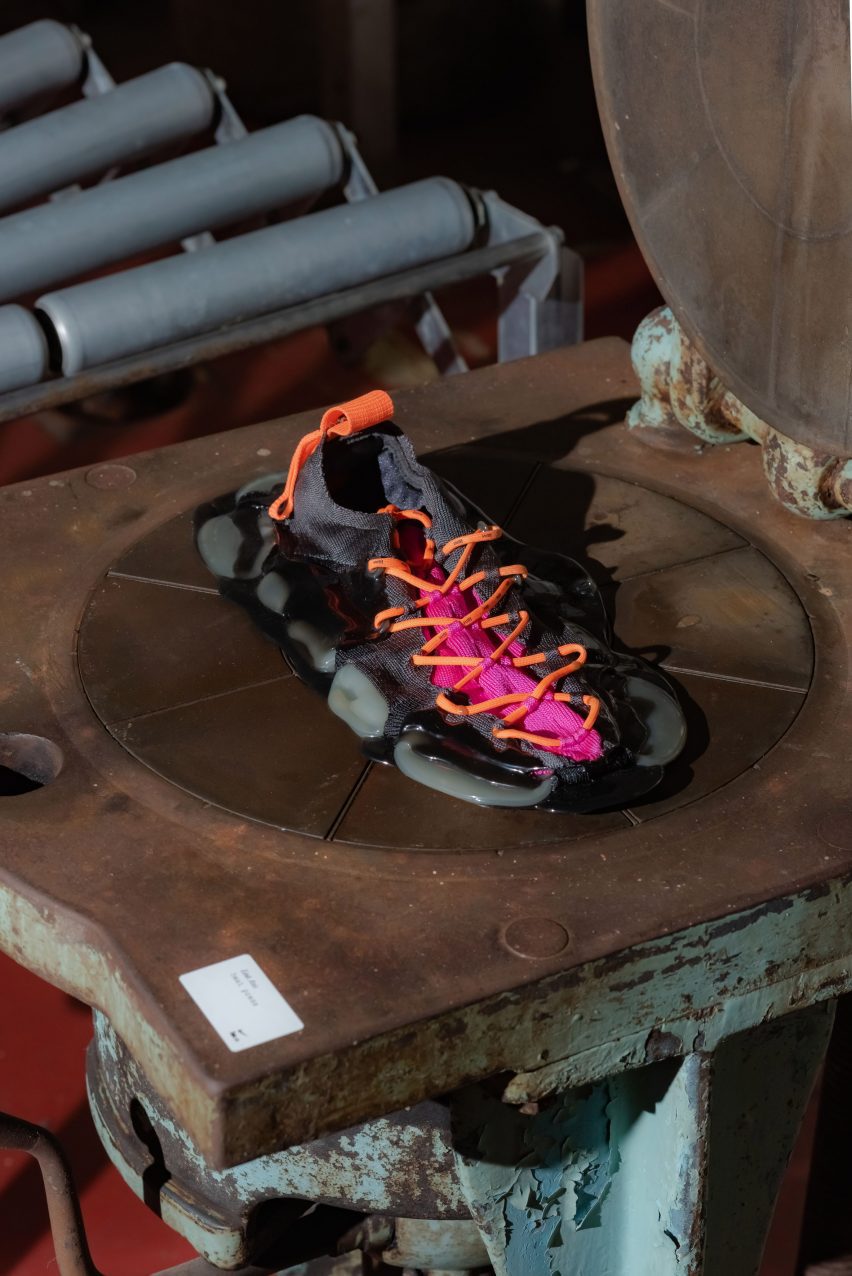
Three rooms in the large industrial space displayed different ISPA models – MindBody, Universal and LinkAxis – together with strategies and production techniques used to both eliminate waste and come up with more innovative shoe designs.
"What we're doing is recontextualising what a shoe is," Matthews said.
In the first room, Nike's MindBody trainer, which was designed using modular construction, was on display together with algae inks and dyes made from material that was either foraged or sourced from repurposed food waste.
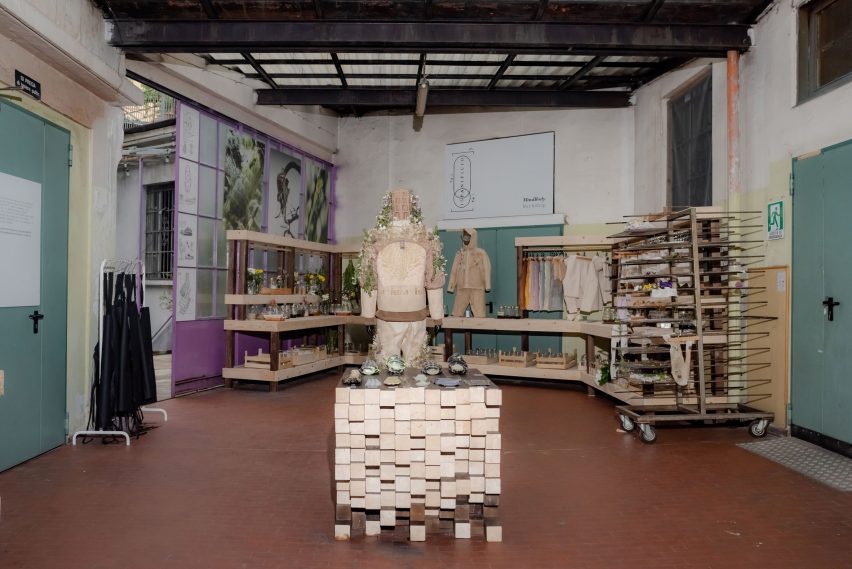
The brand invited visitors to create their own customised pattern pieces. Working with people and getting their opinion on sustainable designs helps Nike educate itself, Matthews said.
"We're a design company, we're an innovation company and we have a multitude of manufacturing advancements that we would like to share and get people's opinion on," he explained.
"Coming to an audience like this, we are educating ourselves, ultimately to educate others in turn by the conversations that we have," he added. "We get inspiration from these conversations and the reactions that people have towards some of these product journeys – it's not for everybody, which is great."
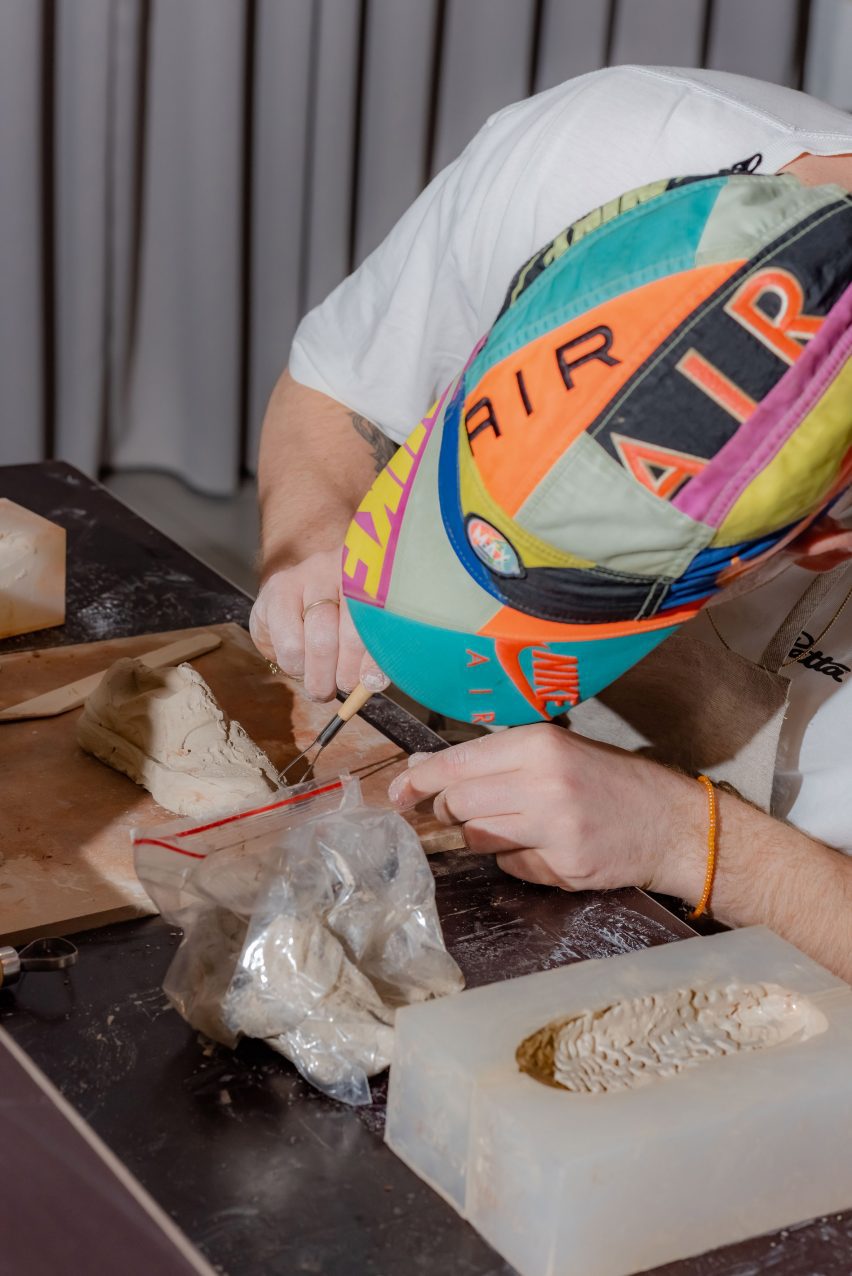
The company has also experimented with artificial intelligence (AI) design, with the second room housing its ISPA Universal trainers. The model was AI-designed as a combination of four existing Nike shoes and is made from a foam developed from sugar cane.
"The shoe is made from a biofoam that Nike had been working on for a long time," Matthews said. "It's injected and so simple to make but it looks so unique."
"Nike has done a lot of things that are different-looking," he added. "They're actually pushing the boundaries with the processes and in turn, that recontextualises what a shoe can be, pushing the boundaries of shape and form."
"Maybe in the past, the culture wasn't ready for it so it didn't stick, but it feels like right now is a moment when it's starting to stick – and for good, because the process is better."
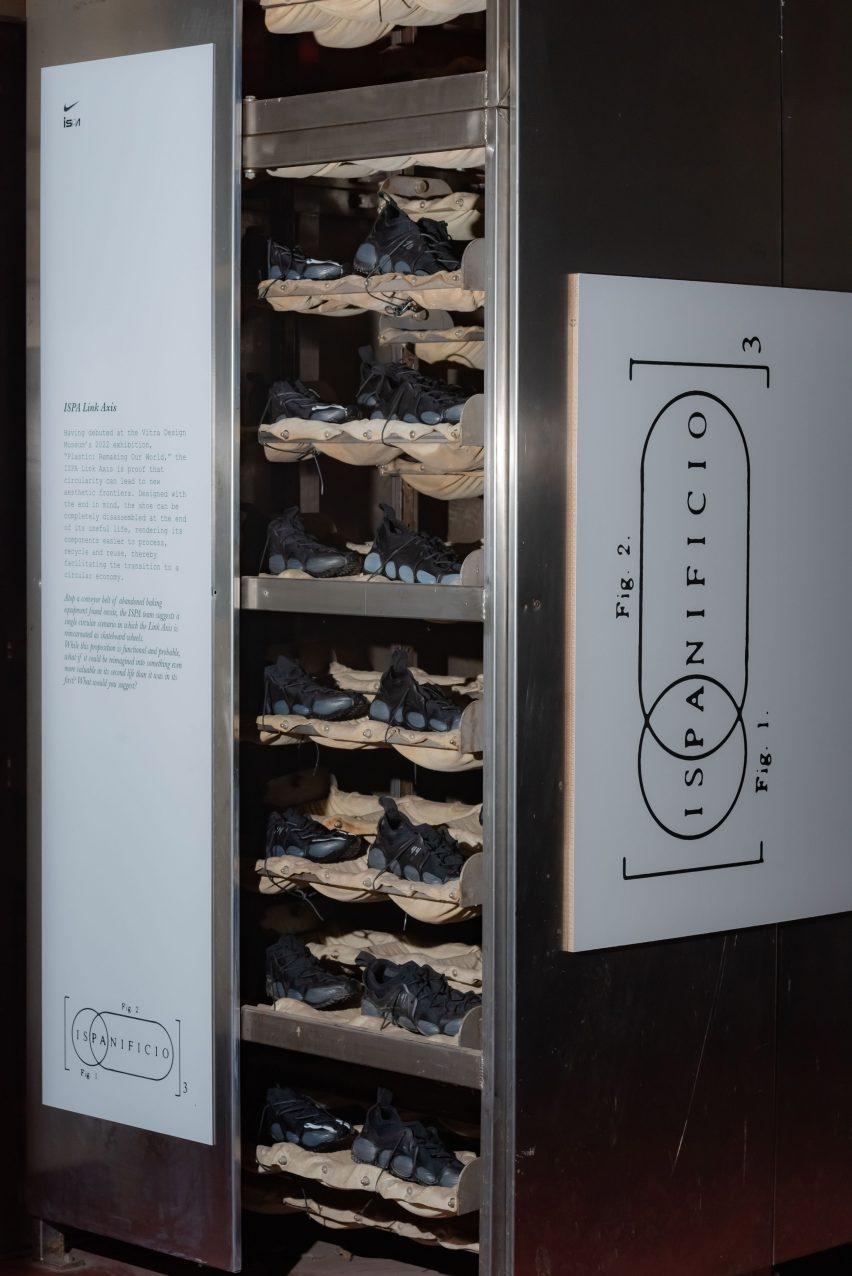
In the final room of the ISPAnificio exhibition, Nike aimed to showcase some of its production process using the machinery from the former bakery in which the exhibition was held. Here, the ISPA Link Axis, which can be completely disassembled at the end of its life, was shown being turned into skateboard wheels.
The manufacturing of the Link Axis is part of the brand's move towards becoming a carbon-neutral company and has seen it make a number of changes to its production process.
"It's about questioning, why can't this shoe be like this?" Matthews said.
"We don't have heating tunnels anymore, we don't have cooling tunnels. The footprint of the manufacturing process is reduced and CO2 emissions have been reduced just from thinking this way."
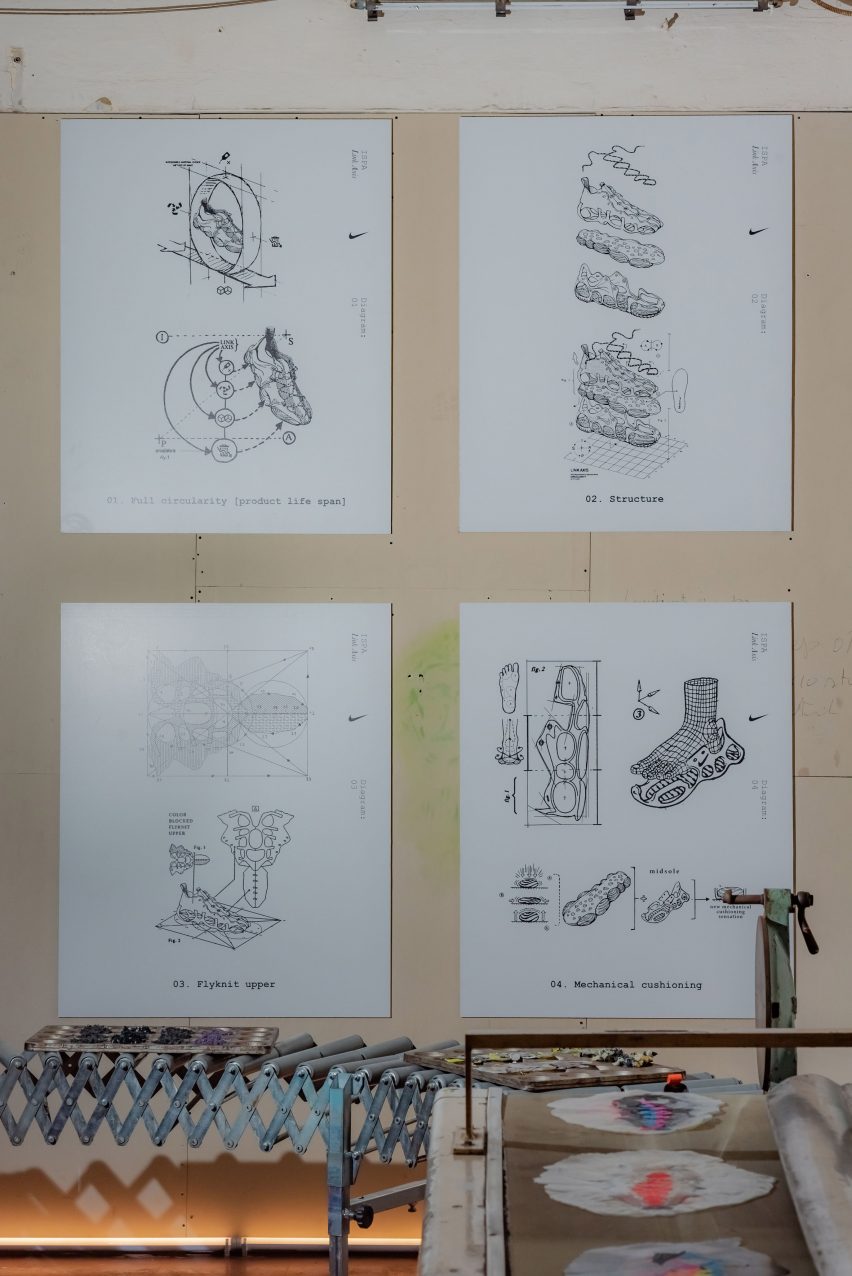
Digital design is also playing a role in Nike's shoe design today, but needs to still be combined with a more hand-crafted feel, according to Matthews.
"When you're designing a shoe digitally it's an amazing tool – we've created something really unique," he said of the ISPA Universal.
"It's very difficult to visualise this kind of thing [when working] by hand instantaneously, like we can with the digital process," Matthews said.
"But what happens then is you have an element of disconnect; the understanding of shape and form is a different dialogue than you normally have if you do it by hand."
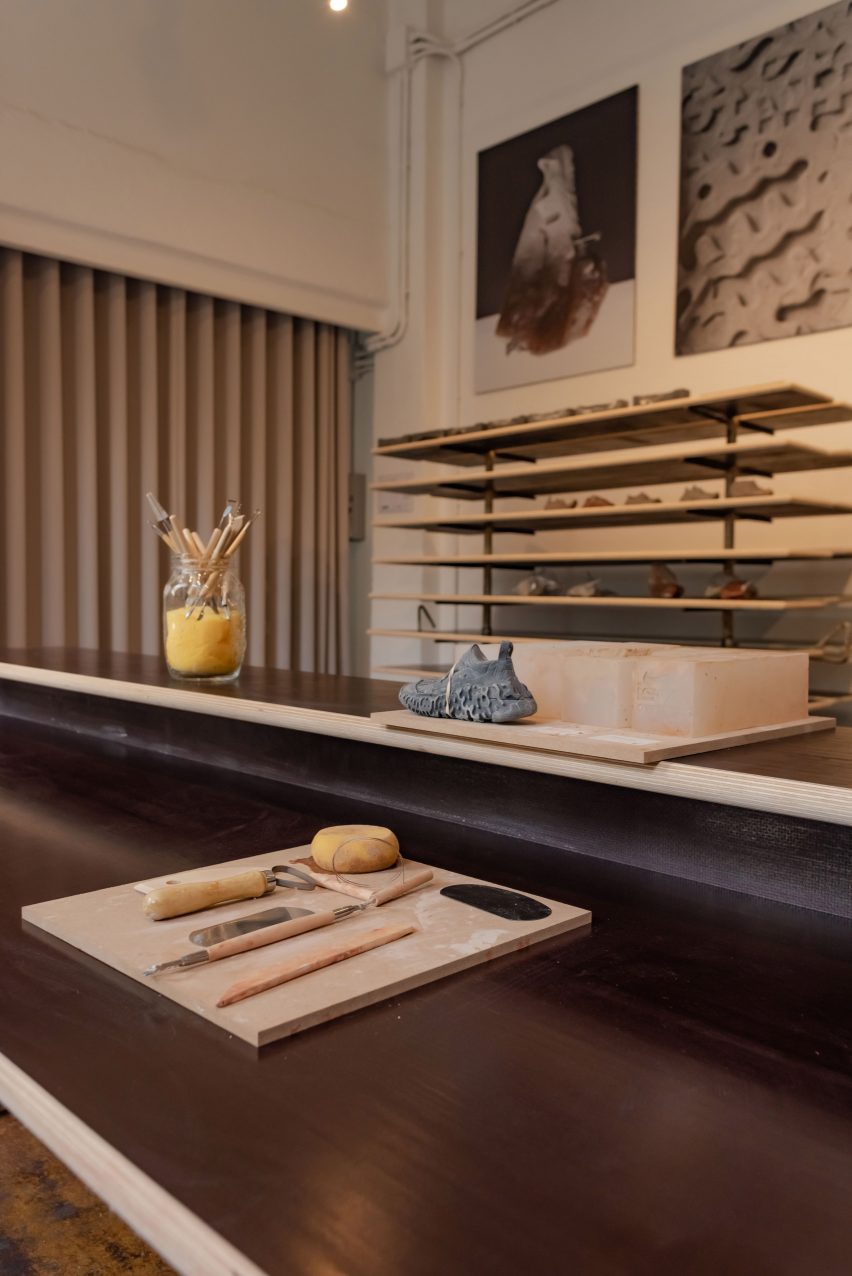
To combat this sense of disconnect, the brand held a workshop that let visitors create clay trainers using 3D-printed molds made at the Nike headquarters.
"We're basically working backwards from the digital form by connecting all the points for people to make them by hand, manipulating it themselves and have a better understanding of why they are doing what they're doing," Matthews said.
"That's designing with emotion," he added.
The photography is by Gianluca Normanno.
ISPAnificio was on show from 17 to 23 April 2023 as part of Milan design week. For more events, exhibitions and talks in architecture and design visit Dezeen Events Guide.
Dezeen in Depth
If you enjoy reading Dezeen's interviews, opinions and features, subscribe to Dezeen In Depth. Sent on the last Friday of each month, this newsletter provides a single place to read about the design and architecture stories behind the headlines.